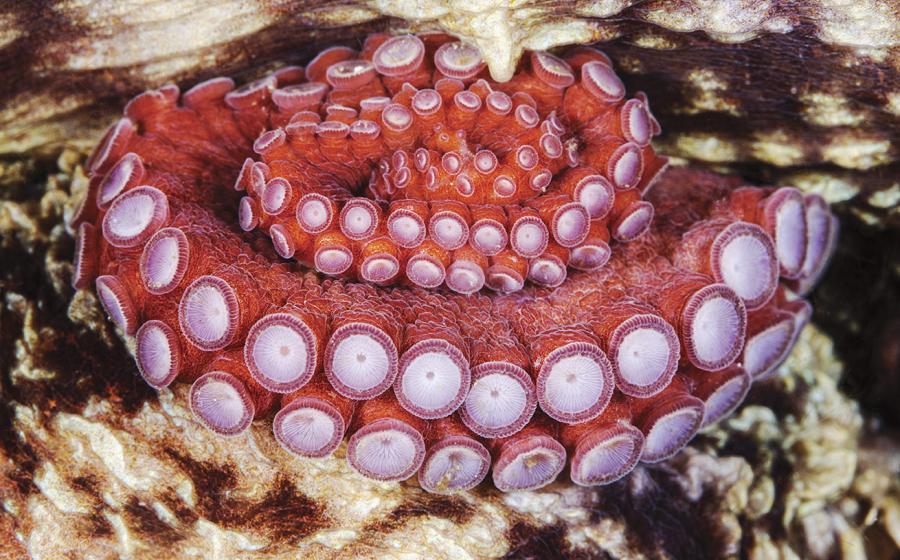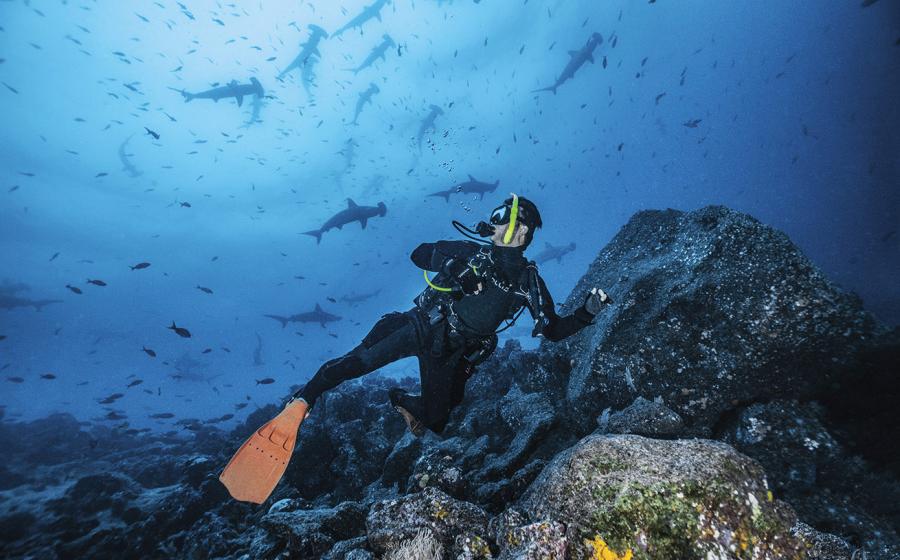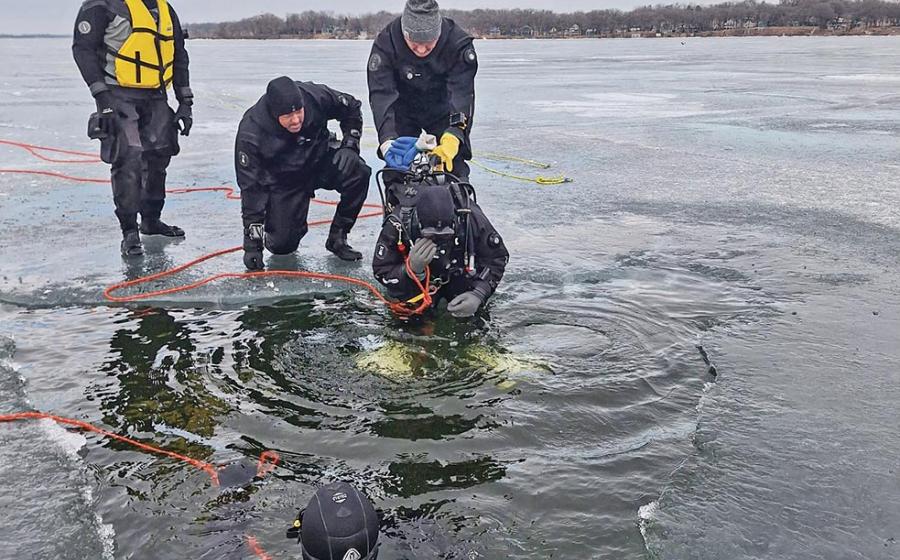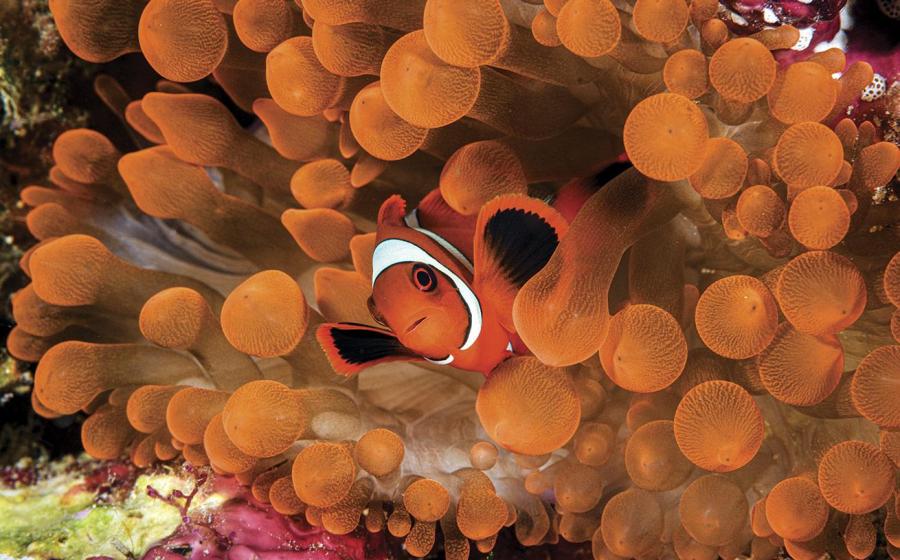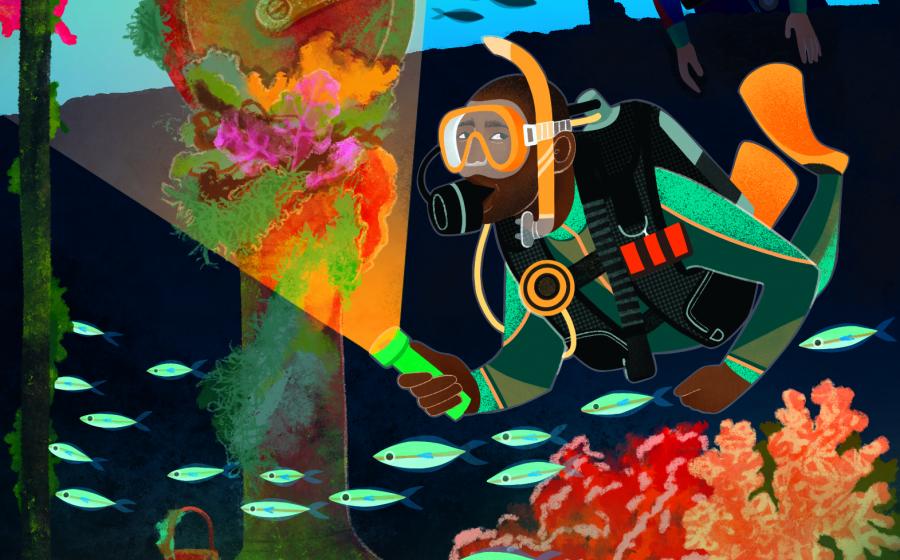Photography Tips: Coral Reefs

Christian Loader/Scubazoo
Want to learn how to shoot stunning, wide-angle reefscapes?
You may be familiar with “landscapes” in topside photography, which refers to wide-angle images that cover an expansive view of the countryside, or a mountain range for example. This type of photography depicts stunning, natural scenery, often with little or no human influence – resulting in powerful images which puts the viewer right there in the scene. Taking the plunge underwater though, landscapes become “reefscapes” – where the coral reef, rock formations, or seabed are the dominant subjects. “Seascapes” is another term often used for images in which the focal subject is the ocean, water, or the surface, rather than the reef or seabed.
Here are some tips to help you start shooting reefscapes:
- Lenses
With a DSLR you need to use a wide-angle lens to shoot reefscapes. Ultra-wide fisheye lenses are the best choice for this type of underwater photography, with a horizontal field-of-view of up to ~120 degrees. With a fisheye lens, straight lines in the outer areas of an image appear distorted (compared to rectilinear lenses), which is more noticeable on land and can often look quite odd. However underwater, straight lines are rarely found in a natural reefscape, so the 'warped' fisheye look is less noticeable. Fisheye zoom lenses such as the Tokina 10-17mm and Canon 8-15mm are the most versatile and a strong favorite among wide-angle photographers, but other fisheyes such as the Nikon 10.5mm, Canon 15mm, Sigma 15mm, or Nikon 16mm are all perfectly suitable for shooting reefscapes. House your fisheye lens inside a large dome port such as an 8” or 9” dome (rather than a 4” mini dome) for optimal corner sharpness as well as to further reduce the 'warped' look.
Rectilinear wide-angle lenses such as 8-16mm, 10-20mm, 14mm, 14-24mm, 12-24mm, 16-35mm, or 17-35mm for example are also suitable for reefscape photography, used with a large, standard dome port. However, corner sharpness can be an issue using rectilinear lenses with standard dome ports, and the horizontal field-of-view of these lenses is typically less than ~100 degrees, therefore a fisheye lens is a more preferable choice all round for capturing a vast panoramic underwater scene.
- **Lighting
** The majority of stunning reefscapes are usually in fairly shallow water of less than 15m, so shooting with natural light and manual white balance is the way to go. With your strobes turned off and keeping the sunlight behind you, open up your camera's aperture and set the white balance manually using a light part of the reef or sand, or a large white slate. Setting the white balance 1-2m deeper than the depth at which you plan to shoot will give the coral reef's natural color a boost, which is beneficial on dull, cloudy days. In bright, sunny conditions however, set your white balance at the same depth you plan to shoot. Shooting with natural light, it's best to keep the sunlight behind you, but try and avoid casting your shadow when you're close to the reef or seabed. Shooting in the middle of the day will give you the strongest (and harshest) light, while the early morning or late afternoon sunlight is softer, warmer and easier for capturing sunbeams as the sun is lower to the horizon. In this situation you'll actually need the sunlight in front of you, usually at the very top of your frame, or just out of the frame.
Shooting with natural light and manual white balance in shallow water, your strobes can be used on low power as a 'fill light' if necessary – to fill in shadows on the reef, or illuminate fish and other marine life in the foreground, but be aware though that too much artificial strobe light on a manually white balanced scene will result in an unpleasant red/pink tint to the image. To a degree this problem can be dealt with later when editing your images, but it's best to keep your strobe light to a minimum.
For deeper, darker reefscapes, you'll need to shoot with strobes and auto white balance. Use long strobe arms and position the strobes (on a high power setting) far out from the housing and in the 10 & 2 o'clock positions for horizontal shots, to light as much of the foreground reef as possible.
**Settings
** Your camera settings for shooting reefscapes should be similar to those for general wide-angle photography. A fast shutter speed between 1/125s – 1/200s is suitable, and even faster shutter speeds will freeze any rays of sunlight in the water column. Shoot with an f-stop higher than f8 for optimal depth-of-field and corner sharpness. When shooting deeper reefscapes in darker water, using a slower shutter speed such as 1/80s for example will help to brighten up the surrounding water. To capture the detail of fast-moving, breaking waves at the surface, turn off your strobes and use a much faster shutter speed such as 1/1250s, and adjust your aperture and ISO accordingly to properly expose the image.**Subjects
** As previously mentioned, most photogenic reefscapes will be found in the shallows, such as pristine coral gardens, reef tops, reef slopes, rock formations, mangroves, or sandy seagrass beds for example. In shallow waters, the surface of the sea can play an important role in your reefscape image – small ripples on the surface in calm water provide dappled sunlight on the reef or sand; flat calm water allows you to capture the reflection of the reef/seabed, or use it as a window to the sky and clouds above if shooting at a more upwards angle; or a simple breaking wave can create a powerful “seascape”.
Shooting on a healthy coral reef, rich, warm colors are especially important and contrast very well with the surrounding blue water, so pay attention to patches of the reef with vibrant reds, oranges, and yellows found in many species of hard corals, soft corals, sponges and sea fans.
Fish and other marine life may add a nice touch to a reefscape, but generally should not be the focal subject in such images. Likewise, you may want to avoid shooting divers in your reefscapes. The emphasis on this type of photography is capturing wild, natural, underwater scenery – an environment where we humans don't belong! However, rules can always be broken to capture the perfect shot, and sometimes a diver far in the background of a reefscape can give a sense of scale to the vast scene, and add a human element the viewer can connect with. Cover all bases and shoot your reefscape with and without a diver, and decide for yourself what looks best.**Composition
** Reefscapes are most commonly shot as horizontal, rather than vertical compositions. Shooting reefscapes on a reef wall for example is an exception where a vertical composition may be more favourable. Horizontal reefscape images with empty negative space above (such as blue water in a deeper reefscape), can benefit by cropping the top of the image, resulting in a panorama which enhances the wide field-of-view. This can also be useful if there's a diver's fin, snorkeller, boat, fish, or any other distracting features in the top of your image.
While many reefscapes will be shot at a flat angle for a typical panorama, to capture more detail in the sea surface, or a reflection, you'll need to shoot slightly upwards. On a shallow reef with many table corals for example, or at a reef drop-off with rich blue water, shooting at a steep downwards angle can work really well.
As with composition in all wide-angle photography, when shooting reefscapes keep in mind the rule of thirds, as well as framing – if there's a prominent feature in the foreground such as a sea fan, table coral, or soft coral, compose your image so that feature is off-center, but be careful not to cut part of it out of the frame.
Reefscapes can vary greatly from one dive site to another all over the world, and are often unique, much like a fingerprint. When you think back to incredible places you've dived, it's often the “underwater landscape” you remember first, rather than the marine life, so reefscape photography should appeal to many underwater photographers.
Shooting reefscapes will particularly improve your skills shooting with natural light, as well as your general wide-angle composition. They can be a good option if you're limited to a shallow dive at the end of the day, and a great way to use up time during a safety stop on the reef-top. Just follow these tips and you can produce stunning panoramic reefscapes that would look great on your wall at home!
Need some inspiration? Check out Scubazoo's Gallery: Coral Reefs HERE.
Christian Loader (31, UK) is a full-time professional photographer for Scubazoo Images (_www.scubazoo.com). He has worked extensively throughout SE Asia as an underwater videographer and photographer for Scubazoo since 2007, and lives in Kota Kinabalu, Sabah, Malaysian Borneo._





